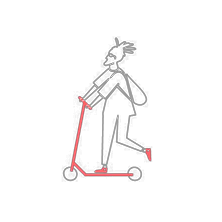
Political participation can be broadly defined as “citizens’ activities affecting politics”. There are 3 characteristics common to all kinds of the political participation: it is an activity or action, it is voluntary and it is conducted by non-professionals. The forth characteristic- where the political participation is located and directed- may vary from activity to activity.
Political participation in the traditional strict meaning of the term is located in the sphere of government/ state/ politics and comprises such activities as:
- casting a vote
- supporting a candidate
- contacting public officials
- signing a petition
- joining a demonstration
- attending party rallies
Political participation in a less traditional and looser sense is lying
beyond the governmental area but is still located in a political context, or expresses political intentions, or aims to solve collective problems. In this sense political participation may also comprise such activities as:
beyond the governmental area but is still located in a political context, or expresses political intentions, or aims to solve collective problems. In this sense political participation may also comprise such activities as:
- volunteering in a hospital
- being a member of a sports club
- posting a blog
- political consumption
- street parties
- guerrilla gardening
- so called “clicktivism”
- so called «buycott»
- civil disobedience
The popularity of the latter activities is a result of their their availability to the citizens and the citizens’ growing awareness of how the political impacts their private lives, and vice versa. The boundary between the political and the private is increasingly blurring today.
